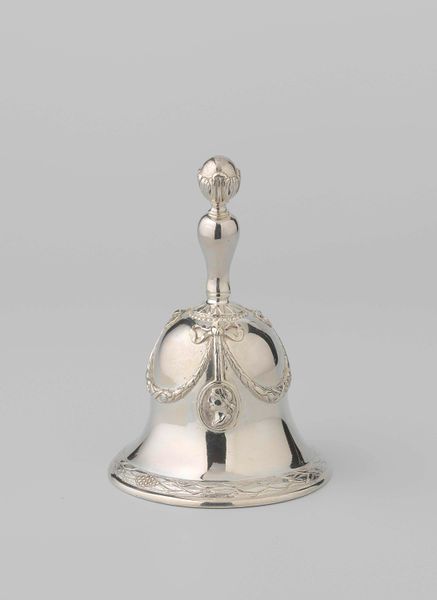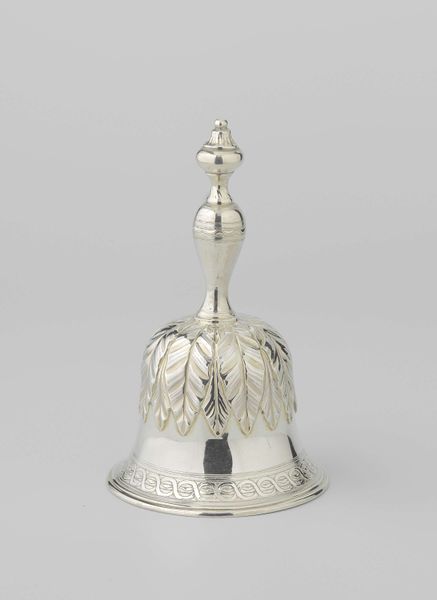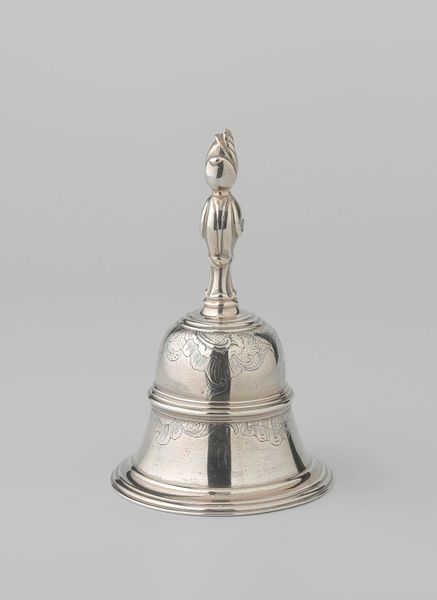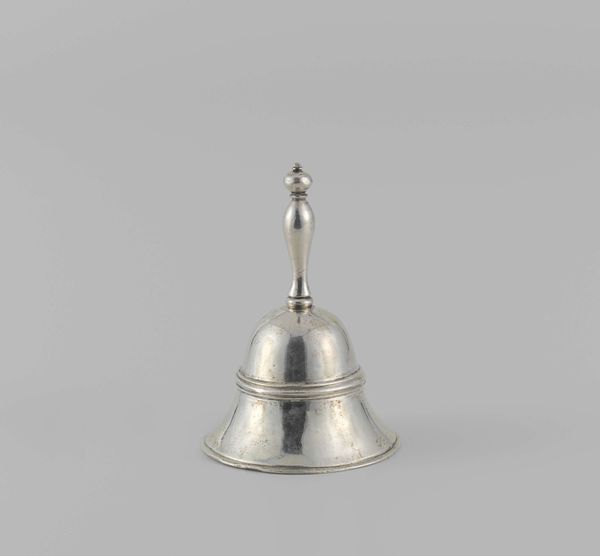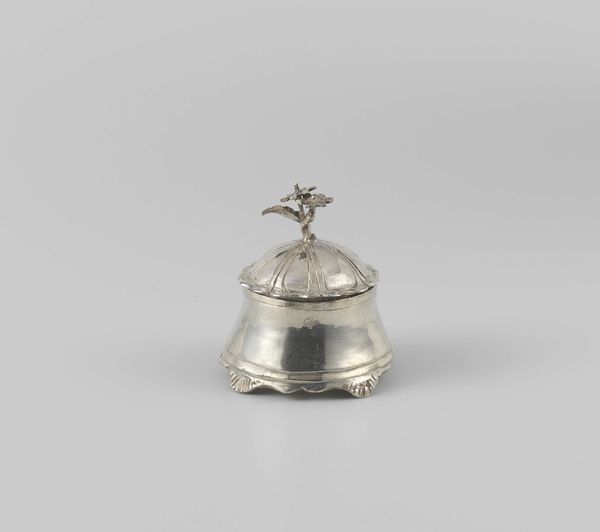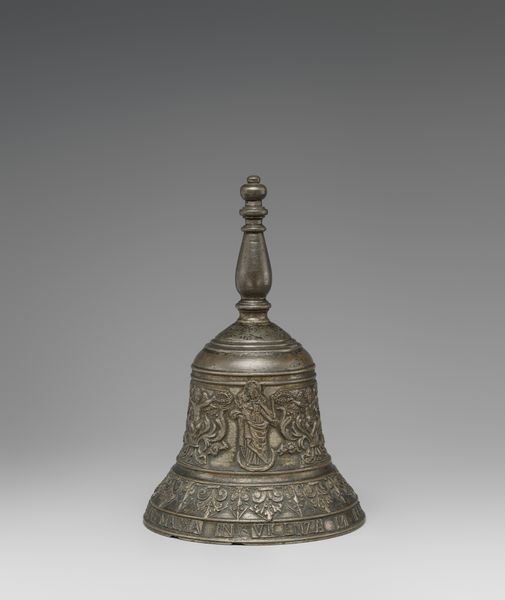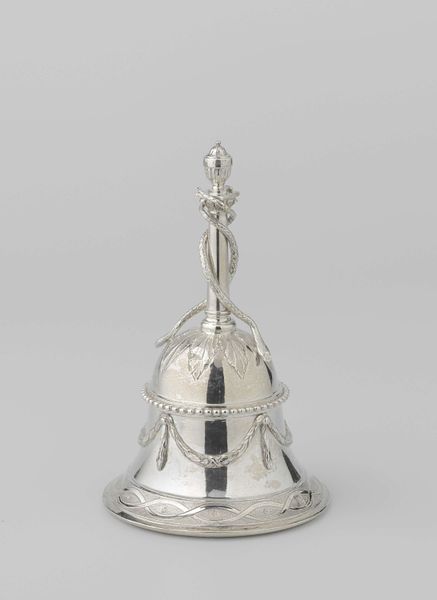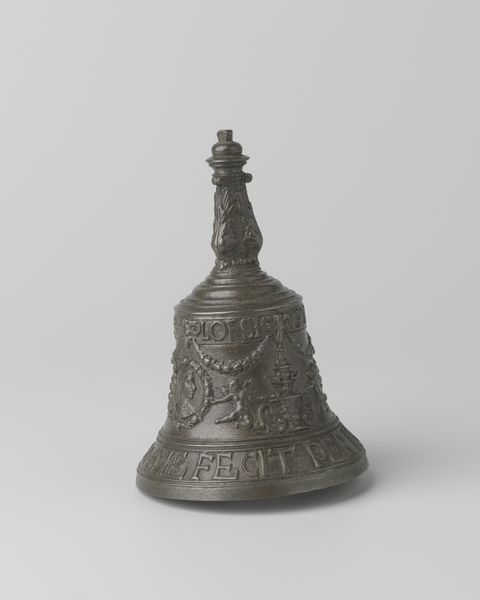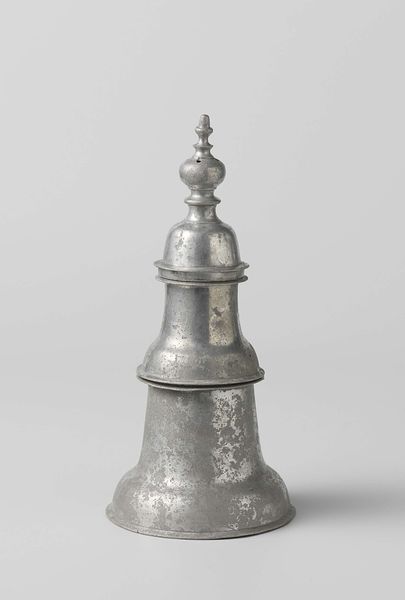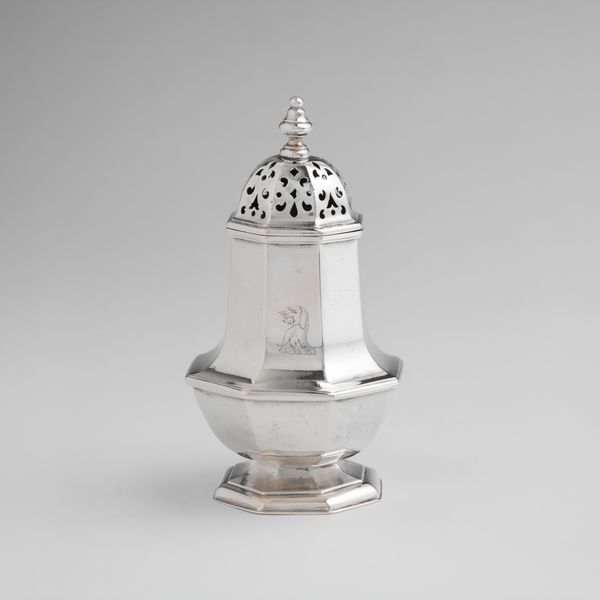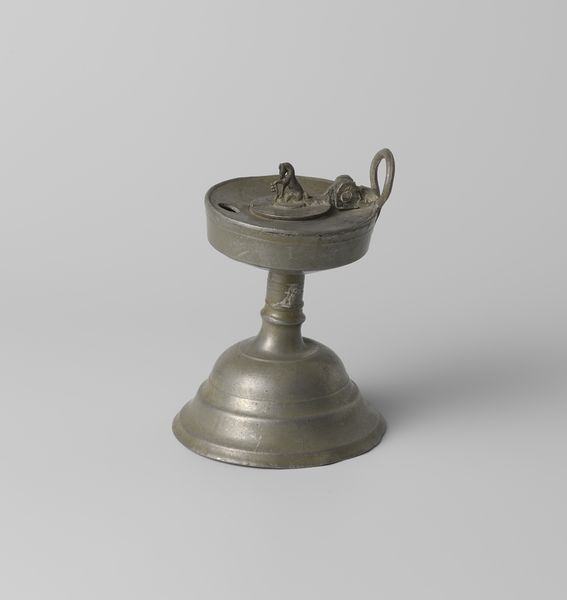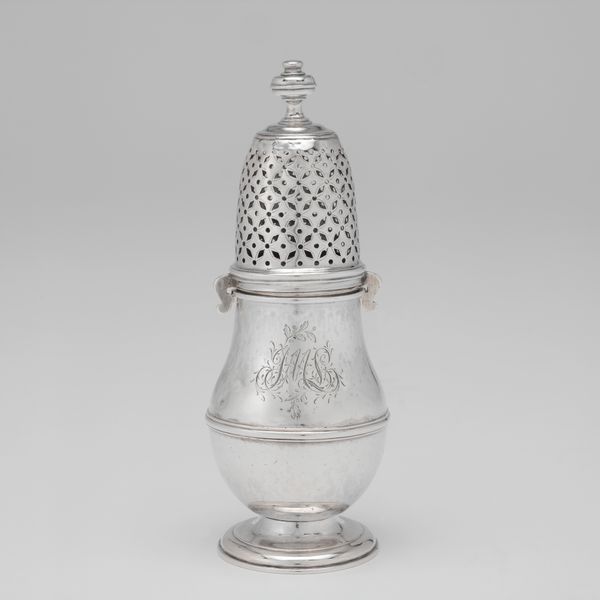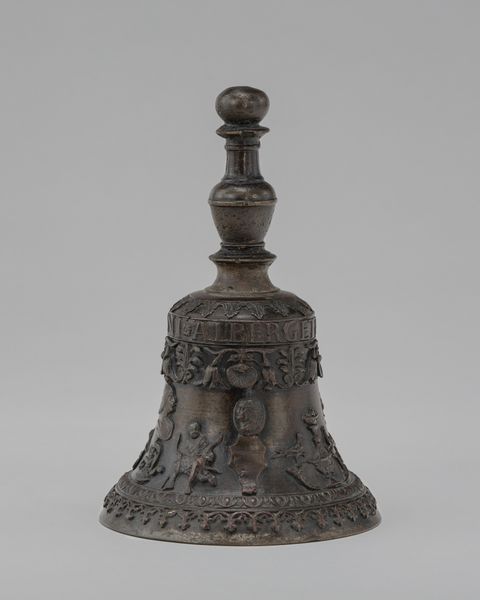
Dimensions: height 14.4 cm, diameter 8.5 cm, weight 362 gr
Copyright: Rijks Museum: Open Domain
Editor: Here we have a metal sculpture titled "Handbell," crafted in 1776. Its silvery surface is quite reflective, giving it an almost ethereal quality. I'm curious about its functionality and who might have commissioned such an object. What strikes you most about it? Curator: Well, first off, it is crucial to consider what “metal” really entails. Was this forged, cast, or assembled from various metal pieces? How did the labor conditions impact its craftsmanship and aesthetic, considering the historical moment it was produced? The date is suggestive of its production during times of dramatic social change, impacting manufacturing and markets for luxury goods. Editor: That's an angle I hadn’t considered! So, instead of purely appreciating its visual qualities, you’re more interested in how it was made, the material sourcing, and the implications for the worker who made it? Curator: Precisely. Who was crafting these luxury items while revolutions were brewing? What were their lives like? Did they buy into the message that such ornate metal-worked objects signified? We see the bell as a single product, while in the details of production and materiality lie complex histories and labor narratives. Editor: I see. It becomes more than just a decorative object. It's a physical record of social and economic conditions, a symbol of someone's labor. Thank you for showing me how to dig beneath the surface. Curator: It highlights the complex relationship between artistic creation, material resources, and societal contexts. And reminds us that the art object’s aura hides a larger social story, if we are willing to search.
Comments
No comments
Be the first to comment and join the conversation on the ultimate creative platform.
